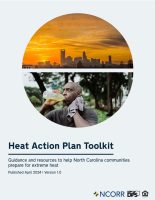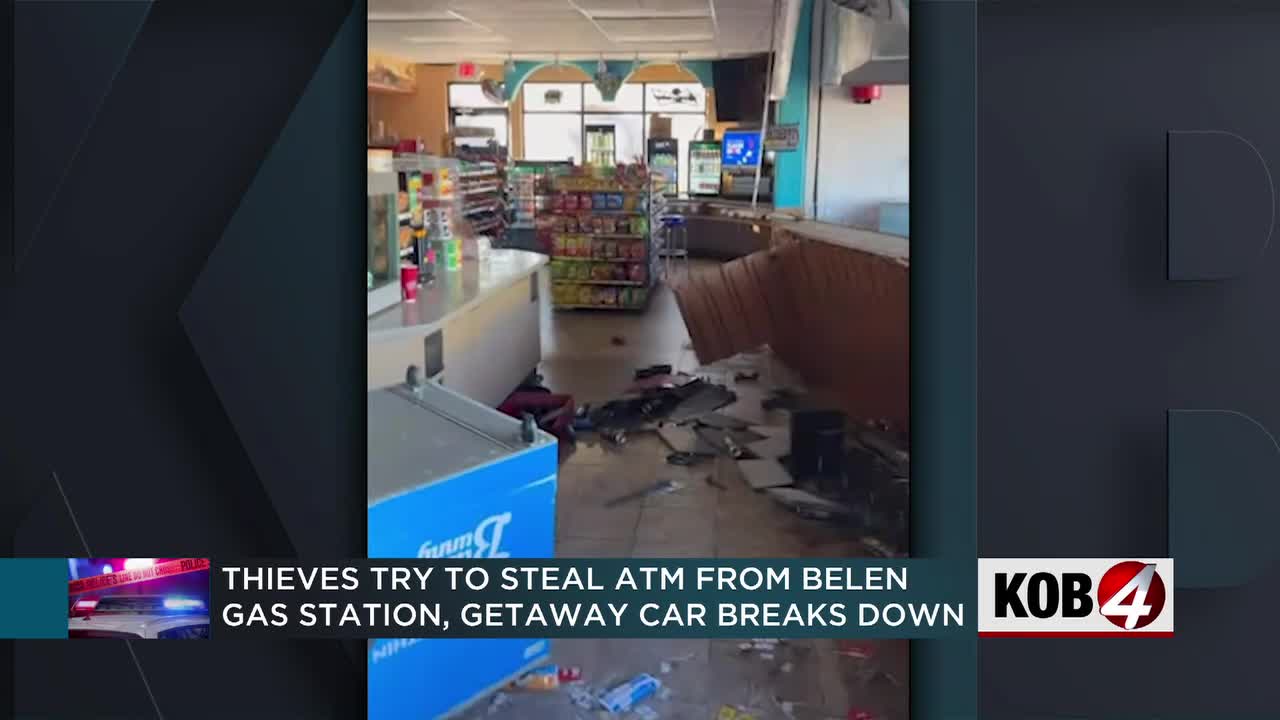South
Chinese migrants say they use TikTok to find gap in US border fence as apprehensions explode

Chinese immigrants are flocking to the U.S. in record numbers, with government data indicating a surge of nationals being apprehended at the southwest border.
Those Chinese nationals have permeated the southern border by utilizing tools and instructions they have found through TikTok, CBS’ “60 Minutes” found.
Field reporter Julio Rosas and “Confucius Never Said” author Helen Raleigh discussed what has motivated Chinese immigrants to come to the U.S. in the first place and how the surge of asylum seekers has impacted national security during “Fox & Friends.”
FOX NEWS FOOTAGE SHOWS RELEASE OF CHINESE NATIONALS INTO US AMID MASSIVE SPIKE IN ENCOUNTERS
“They were really driven by, first of all, the open invitation of our lawless border,” Raleigh told Lawrence Jones on Tuesday. “Everybody else is doing it, facing no consequences, so they are following those examples. And secondly, but most importantly, they were driven by China’s, political, ongoing political persecution and a deteriorating economic situation.”
“Nobody feels safe in China, and… on the economic front, there’s a high youth unemployment rate. The stock markets are deteriorating. People saw the biggest drop of their salaries last year, as well as the property market, slumping and the property market especially hurting people’s confidence because over 70% of the Chinese people have their personal wealth tied to properties,” she continued.
“So all these factors combined are driving people to come here.”
“60 Minutes” met some of the Chinese migrants coming through the southern border in a segment that aired over the weekend, where many said they have been able to make it into the United States by following explicit directions posted on TikTok. They were reportedly given instructions on how to get a smuggler’s help to enter the country through a border wall gap.
Camera crews captured several carloads of the migrants being dropped off by smugglers at an open border gap east of San Diego. Many of the illegal immigrants traveled through many countries on a treacherous, expensive journey to come to America.
FBI DIRECTOR WRAY SAYS BORDER GOTAWAYS A SOURCE OF ‘GREAT CONCERN’ FOR AGENCY
The number of Chinese nationals apprehended at the southwest border has surged in recent years.
In fiscal year 2021, there were only 450 Chinese migrants apprehended, in contrast to 2,176 and 24,314 in fiscal years 2022 and 2023 respectively.
Chinese migrants are the fastest growing group trying to come to the United States, according to CBP. Many are flying to Ecuador, where they don’t need a visa, and making their trek through Latin America before reaching the U.S. southern border.
“This really hasn’t happened before, at least in these large numbers,” Rosas said. “We’re not even talking about people from Asia. But we just had that recent report where an al-Shabab terrorist didn’t even avoid Border Patrol. He turned himself in, he was processed and released, and was in the country for over a year before the U.S. government realized their mistake.”
CLICK HERE TO GET THE FOX NEWS APP
“This is very concerning. I’ve been raising the warning for quite some time about this,” he continued.
A TikTok spokesperson told Fox News, “TikTok strictly prohibits human smuggling which we remove from our platform and report to law enforcement when warranted.”
The spokesperson also noted that during the third quarter of 2023, the platform “proactively” removed 93% of videos for violating its human exploitation policy.
Regardless, Rosas warned the porous southern border could facilitate an opportunity for American adversaries to “exploit” U.S. interests.
“It’s what we’ve been seeing for the past few years now, and the fact that there’s no fear, the fact that we have Border Patrol essentially trying to hide from illegal immigrants and illegal immigrants are the ones trying to find Border Patrol, that just shows how crazy things have become under this administration,” Rosas said.
“It’s not even central or even South Americans anymore. It’s people from all over the world and people coming from, let’s face it, adversarial countries who may want to do us harm and may want to exploit us through this weak point,” he continued.

North Carolina
Burnin' up: State offers help for top weather-related killer | Coastal Review

It’s not hurricanes. It’s not tornadoes. It’s not floods.
Heat is the No. 1 weather-related killer in North Carolina, but also the most preventable, according to the state’s recently released Heat Action Plan Toolkit, designed to help communities adapt as climate change drives more frequent and intense heat events.
“Our days and nights are getting hotter as the planet warms,” State Climatologist Dr. Kathie Dello told Coastal Review recently.
“We’re seeing more instances of record daily maximum temperatures than daily minimum records. But we’re also seeing more relentless heat — days and nights that are consistently above the temperatures that we’re used to, but maybe not Earth-shattering. And we’re seeing the hot days and nights starting earlier,” Dello said, adding that the temperature in Raleigh hit 92 degrees May 2, “Our first day over 90, about a week and a half earlier than normal.”
Children, older adults, athletes, outdoor workers and those who are pregnant, with chronic health conditions or without access to air conditioning are most vulnerable to the effects of extreme heat, but everyone is at risk.
North Carolina Office of Recovery and Resiliency Resilience Policy Analyst Andrea Webster said that deaths and heat-related illnesses from extreme heat are 100% preventable.
“While residents are used to hot temperatures, North Carolina’s coast has a high number of outside visitors in the summer months. If they come from a much cooler area, their bodies are likely less adapted to extreme heat. Messaging about symptoms, cooling and hydration strategies, and resources to stay cool can drastically reduce health impacts and emergency department visits,” Webster said.

This is where the toolkit comes in.
The 72-page document features a template with fill-in-the-blank language for local governments, health departments and other entities to write its own heat action plan, as well as about the causes and symptoms of heat-related illnesses, groups most at risk, and where to look for funding. Supplemental materials for getting the word out to the public such as sample graphics, factsheets, brochures, and scripts to warn of impending high heat are on the toolkit website.
“With the frequency and severity of extreme weather increasing, it’s more important than ever to build local resilience that will help protect people and save lives,” Gov. Roy Cooper said when the plan was announced in late April. “The new toolkit provides valuable resources that will help local governments prepare for and respond to these potentially life-threatening events. The project also underscores how state partnerships are critical to finding climate solutions that benefit all North Carolinians.”
About the toolkit
The Office of Recovery Resiliency led the effort in partnership with Dello’s State Climate Office of North Carolina, the N.C. Division of Public Health, Duke University Heat Policy Innovation Hub and the National Oceanic and Atmospheric Administration Carolina’s Climate Adaptation Partnership.
The idea for the toolkit came about as part of the Regions Innovating for Strong Economies & Environment, or RISE, program, according to the website. Participants from across the state said a heat action plan template was a priority resilience project.
Dr. Rebecca Ward, a postdoctoral research scholar, was lead developer of the toolkit and collaborated heavily with Webster. Ward is with North Carolina State University’s Coastal Resilience and Sustainability Initiative and the NOAA Carolina’s CAP.
Ward explained that developing the Heat Action Plan Toolkit took about a year, from initial idea to final product.
“Throughout the whole process, I’ve been continually delighted with how many different groups and individuals have shared their time and expertise to help create content and give feedback. We’ve done our best to make sure that this will be useful and usable — very ‘plug-n-play’ — for its target audiences of local governments, primarily health departments and emergency management,” Ward said.
Webster said that local and county governments, health departments and other leaders can use the toolkit to ensure there is a plan in place for when a heat wave is in the forecast, and to ensure that community partners are developing and pursuing resources that help residents and visitors cool down when it’s hot.
“We know that local government leaders are juggling so much — and the more invisible hazards, like heat, may not be top of mind for folks. We’re also just dealing with summers like we haven’t seen in our past,” Dello said. “What used to be a once in a generation hot summer is now happening more frequently. We designed it so it would be helpful and accessible for everyone.”
Webster said the meat of the toolkit is the template heat action plan.
“This word document is already designed with draft text. We want to encourage jurisdictions and community partners to work together to pick out the suggested heat resilience actions that work best for their community and start implementing the actions in the plan,” Webster said.
A list of resources is included for community leaders to contact for help filling in the template ahead of an extreme heat event, and provides instructions on how to identify census tracts with high concentrations of residents especially vulnerable to extreme heat, such as the elderly, she said.
Leaders can access region-specific heat thresholds to know when to send out heat awareness messaging, which is part of the toolkit. There is sample messaging, graphics, fact sheets, checklists, sample community surveys to understand how residents currently deal with extreme heat. Many of the toolkit’s supplemental materials are also available in Spanish.
“NCORR plans to offer workshops for communities to begin developing their heat action plans. Sign up for our e-newsletter to learn about upcoming offerings,” Webster said.
Ward said that the workshops are to take place over the next few months with target users to work through the toolkit.
“I think these will be great opportunities to advance our state’s resilience to extreme heat, and any feedback collected during these workshops will ultimately improve the Toolkit, making it more useful and usable — and we hope used — by local governments across the state,” Ward added.
Webster said that so far, the public health preparedness coordinators are particularly excited about the toolkit, and Chatham County used a draft of the Heat Action Plan Toolkit to publish the first Heat Action Plan in the state.
“Heat affects our residents’ health, and it’s often overlooked as a health concern. Having easy-to-use resources at their fingertips is helpful,” Webster said.
Heat illnesses in numbers
The state Department of Health and Human Services has been recording reported heat-related illnesses for some time.
Every year during the heat season May 1 to Sept. 30, the department’s climate and health program publishes heat-related illness surveillance reports. The first report of the year is expected to be on the website by Wednesday, May 15.
In past years, the reports provided statewide data on heat-related illness. This year, weekly reports will also include regional summaries and some county-level information, the department said.
Last year, North Carolina had more than 3,900 emergency department visits for heat-related illness between May 1-Sept. 30, with 497 of those in North Carolina’s 20 coastal counties.
The department’s numbers show that between 2016 and 2023, these counties had around 4,300 total reported heat-related illness emergency department visits.
Department officials noted that the annual number of visits are based on the patient’s county of residence, not where they sought medical attention.
For example, a visitor to Wake County, who seeks help at an emergency department for heat-related illness in Carteret County, may not be included in Carteret’s count.
“Heat-related illness can affect anyone. People who are accustomed to this weather should still watch for the signs and symptoms of heat-related illness and take precautions to protect their health,” a health department spokesperson said. “Take the heat seriously and do not ignore danger signs like nausea, headache, dizziness or lightheadedness, confusion, and rapid or erratic pulse. They can all be signs of trouble. Get to a cool place, drink water slowly and seek medical help if conditions don’t improve.”
The long-term heat forecast
Webster said her office relies on predictions in the 2020 North Carolina Climate Science Report, which states that, for the coastal plain, “climate models project a substantial increase in the number of these very hot days and very warm nights by mid- to late century under both scenarios.”
By 2100, the number of very hot days is projected to increase by 11 to 49 under the lower scenario and 42 to 94 under the higher scenario, compared to the 1996–2015 average. The number of very warm nights is projected to increase by 14 to 45 under the lower scenario and 48 to 87 under the higher scenario, she sited from the report, adding that the State Climate Office regularly updates their projections, so it’s possible that they may have newer data that aren’t published as a report yet.
“We need to start preparing for more frequent heat waves and high nighttime temperatures. That continued stress on our bodies leads to health impacts such as heat cramps, heat exhaustion, heat stroke and even mortality,” Webster said.
Resources
Webster said that residents can sign up to receive heat alerts when the weather is forecast to reach unhealthy temperatures.
The emails from the state health department’s Heat Health Alert System notify when the heat index is forecast to reach unhealthy levels in their county. The sign-up form is available in English and Spanish.
Other resources include the federally funded Crisis Intervention Program administered by the state Department of Social Services that assists those experiencing crises related to temperature, and Operation Fan Heat Relief for eligible adults to receive fans through their local Area Agency on Aging.
Warning signs and symptoms can be found on the Center for Disease Control and Prevention’s webpage on extreme heat symptoms as well as tips for preventing heat-related illness.
Webster said that visitors and everyone spending time outdoors or in unairconditioned spaces throughout the summer months should pay attention to how they feel in high temperatures.
“Stay hydrated, take breaks in the shade, and cool off in cold water. Watch out for dizziness, nausea, heavy sweating, heat cramps and painful muscle cramps in the abdomen, arms or legs following strenuous activity,” Webster said.
The health department recommends taking the following steps during heat season:
- Increase fluid intake.
- Wear sunscreen of 15 SPF or higher. Sunburn affects your body’s ability to cool down.
- Spend some time in a cool or air-conditioned environment.
- Reduce normal activity levels.
- Cool off by taking cool baths or showers, or placing ice bags or wet towels on the body.
- Stay out of direct sunlight, put shades over the windows, and use cross-ventilation and fans to cool rooms if air conditioning is not available.
- Wear lightweight, light-colored, loose-fitting clothing that permits sweat to evaporate.
- Drink plenty of liquids such as water and sports drinks to replace the fluids lost by sweating. As a person ages, thirst declines.
- Limit intake of alcoholic beverages or sugary drinks. If you are on a low-salt diet or have diabetes, high blood pressure, or other chronic conditions, talk to your doctor before drinking sports drinks.
- Check up on friends or neighbors who live alone.
- Never leave children or pets unattended in vehicles, even for a few minutes, as temperatures inside a car can reach a deadly level quickly.
- This can also be a good time to join your local senior center or take advantage of buildings made accessible to seniors during excessive heat. Your community’s public information office can be contacted for additional information.
- Residents are encouraged to speak with their healthcare provider about how to stay safe. Certain medications make you more vulnerable to heat-related illness.
- Keep your medicines in a cool, dry place.
Oklahoma
Legal Aid Services Offer Free Help To Oklahomans Impacted By Tornadoes

Oklahomans impacted by recent severe weather can utilize free legal help.
Legal Aid Services of Oklahoma and Oklahoma Indian Legal Services partner together to create a disaster recovery network in the state for civil legal issues stemming from disaster.
“There are so many disaster survivors who end up having legal problems,” said Christa Figgins, director of mission advancement for LAOK. “And those are legal problems, which if they are not addressed, can really frustrate and really prevent someone from being able to recover from a disaster event.”
Common issues that legal assistance can help with include: recovering lost documents, processing insurance claims, tenant rights, contractor scams, and FEMA applications.
“I think we’re very fortunate in Oklahoma,” Figgins said. “The disaster community in Oklahoma is, sadly, very experienced.”
More information about the free legal services is available at oklahomadisasterlegalhelp.org or by calling 888-602-8494.
South-Carolina
A'ja Wilson's Nike deal ignites apparel controversy at South Carolina

Las Vegas Aces star A’ja Wilson has inked a deal with Nike for her own signature shoe. This announcement comes on the heels of Nike’s recent partnership with WNBA rookie Caitlin Clark, sparking questions about why Wilson, a seasoned player with multiple accolades, hadn’t secured such a deal sooner.
A’ja Wilson, the first overall pick in the 2018 WNBA draft, has an impressive resume that includes two league MVP titles, a Finals MVP, two WNBA championships, two Defensive Player of the Year awards, and five All-Star honors. Her new partnership with Nike marks a significant milestone in her career and brings attention to the apparel affiliations at the University of South Carolina, Wilson’s alma mater.
Gamecocks alumni push for Nike switch following A’ja Wilson’s endorsement deal
The University of South Carolina, a prominent client of Under Armour, faces a branding debate as Wilson’s deal with Nike has reignited discussions about the university’s athletic apparel contract. In 2016, the university extended its partnership with Under Armour for ten years, a decision that was met with mixed reactions from the community, some of whom expressed a preference for Nike.
The contract with Under Armour is due to expire in 2026, and former NBA player Sindarius Thornwell, a fellow University of South Carolina alumnus, has publicly supported the idea of switching to Nike. Thornwell, known for his pivotal role in the Gamecocks’ 2017 Final Four run, reflects a segment of the fanbase that favors Nike over Under Armour.
As the expiration of the current apparel deal approaches, discussions and speculations continue about the potential impact of Wilson’s Nike deal on the future apparel decisions at the University of South Carolina.
-

 World1 week ago
World1 week agoBrussels, my love? Champage cracked open to celebrate the Big Bang
-

 Politics1 week ago
Politics1 week agoAustralian lawmakers send letter urging Biden to drop case against Julian Assange on World Press Freedom Day
-
News1 week ago
A group of Republicans has united to defend the legitimacy of US elections and those who run them
-

 Politics7 days ago
Politics7 days agoHouse Dems seeking re-election seemingly reverse course, call on Biden to 'bring order to the southern border'
-

 News1 week ago
News1 week agoVideo: Tanker Fire Shuts Down I-95
-

 World1 week ago
World1 week ago‘It’s going to be worse’: Brazil braces for more pain amid record flooding
-

 Politics1 week ago
Politics1 week agoHouse COVID committee calling for criminal probe into gain-of-function virus research in Wuhan
-

 Politics1 week ago
Politics1 week ago'Stop the invasion': Migrant flights in battleground state ignite bipartisan backlash from lawmakers













